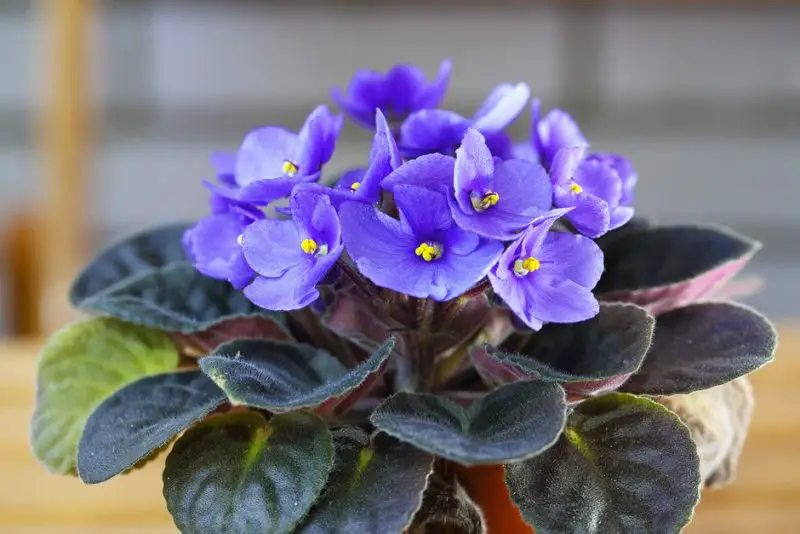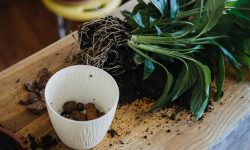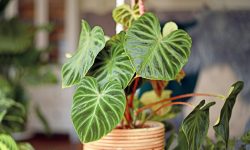African violets, known for their vibrant flowers and fuzzy leaves, are among the most beloved indoor plants. Their small size and long-lasting blooms make them ideal for windowsills, desktops, and tabletops. But while these plants are beautiful and rewarding, they do require specific care to ensure they remain healthy and in bloom throughout the year. This guide covers every essential detail to help you grow thriving African violets that bloom continuously.
Understanding the Needs of African Violets

Why African Violets Need Special Attention
African violets are not high-maintenance, but they are sensitive to their environment. Unlike hardy outdoor plants, these delicate houseplants require controlled conditions. Improper watering, incorrect lighting, or wrong temperatures can stop blooming and even lead to health issues. Therefore, understanding their natural preferences is the first step to successful care.
Origin and Growth Habit
Originally from the cloud forests of East Africa, African violets prefer warm, humid environments with filtered sunlight. In their native habitat, they grow under tree canopies, which means they are adapted to indirect light and consistent moisture. Mimicking these conditions indoors is the key to helping them thrive.
Providing the Ideal Light Conditions
Natural Versus Artificial Light
Light is one of the most critical factors for blooming. African violets need moderate to bright, indirect sunlight. A north- or east-facing window works best because it provides consistent light without the intensity that can scorch leaves. If your home lacks natural light, you can use full-spectrum fluorescent lights. Keep them on for about twelve to sixteen hours a day and maintain a consistent schedule.
Signs of Light Imbalance
If the leaves become dark green and begin to stretch upward, the plant may not be receiving enough light. On the other hand, if the foliage starts to curl or look bleached, the light is likely too strong. Adjusting the plant’s placement or light intensity can quickly restore balance.
Mastering Watering Techniques
Watering Schedule and Quality
African violets are sensitive to water quality and frequency. Water them when the topsoil feels slightly dry to the touch. Room-temperature water is ideal, as cold water can shock the roots. Many growers prefer using distilled or filtered water to avoid mineral buildup, which can cause leaf spotting and poor growth.
Bottom Watering Method
One of the safest ways to water African violets is from the bottom. Place the pot in a shallow tray of water and allow it to absorb moisture through the drainage holes. After about thirty minutes, remove the pot to avoid overwatering. This method keeps the foliage dry and helps prevent crown rot.
Choosing the Right Soil and Pot
Well-Draining Soil Mix
African violets need a soil mix that is light, airy, and fast-draining. A mix designed specifically for African violets is recommended. These mixes usually contain peat moss, vermiculite, and perlite. The goal is to retain enough moisture without becoming soggy.
Pot Size and Material
Choose pots that are not too large, as African violets prefer slightly cramped conditions. A pot that is too big will retain excess moisture, leading to root rot. Plastic or ceramic pots with adequate drainage holes are excellent choices. Repotting every six to twelve months will refresh the soil and encourage new growth.
Creating the Perfect Humidity and Temperature
Maintaining Ideal Temperatures
African violets thrive in temperatures between 65 and 75 degrees Fahrenheit. Avoid placing them near heating vents, air conditioners, or drafty windows. Sudden changes in temperature can stress the plant and inhibit flowering.
Boosting Humidity Levels
These plants enjoy humidity levels around 50 percent. If your home is dry, especially in winter, consider placing a tray of water near the plant or using a humidifier. Grouping African violets together can also create a microclimate that maintains consistent humidity.
Encouraging Year-Round Flowering
Consistent Fertilization Routine
To keep African violets blooming nonstop, a regular feeding schedule is essential. Use a balanced, water-soluble fertilizer formulated for African violets every four to six weeks. Avoid over-fertilizing, as this can lead to salt buildup and damage roots.
Removing Spent Blooms
Deadheading, or removing spent flowers, is important to promote continuous blooming. Gently pinch off old blooms close to the base. This signals the plant to produce more flowers and directs energy toward healthy growth.
Pruning and Leaf Care
Promoting a Balanced Shape
Regular pruning keeps the plant compact and attractive. Remove old or damaged leaves from the outer layers to maintain airflow and prevent disease. A balanced shape also allows light to reach all parts of the plant.
Cleaning the Leaves
Dust can accumulate on the fuzzy leaves, blocking light and affecting photosynthesis. Gently brush off dust using a soft paintbrush or a damp cloth. Avoid getting water on the leaves, as this can cause spotting.
Repotting and Propagation Tips
When and How to Repot
Repot your African violets when they become root-bound or the soil appears depleted. Spring is the ideal time for repotting. Use fresh potting mix and a clean container. Trim off dead roots before placing the plant into its new pot.
Propagating from Leaf Cuttings
African violets are easy to propagate from leaf cuttings. Choose a healthy leaf and cut it with a sharp, sterile knife. Insert the stem into a moist, sterile soil mix and cover it with a plastic dome to maintain humidity. New plantlets will begin to form at the base after several weeks.
Common Problems and Solutions
Addressing Crown Rot
Crown rot is often caused by overwatering or water sitting in the crown. To prevent this, avoid watering from above and always check soil moisture before watering. If crown rot sets in, remove the affected part and repot in fresh soil.
Preventing Powdery Mildew
Powdery mildew appears as a white, powdery coating on the leaves. It thrives in stagnant air and overly humid conditions. Ensure proper air circulation around the plant and avoid overcrowding. If mildew appears, treat it with a mild fungicide.
Dealing with Pests
Mealybugs, aphids, and mites can sometimes infest African violets. Inspect plants regularly and isolate affected ones. Use insecticidal soap or neem oil to treat infestations. Keep the growing area clean to deter pests.
Frequently Asked Questions
How often should I water African violets?
African violets prefer to be kept evenly moist, but not soggy. Water when the top layer of soil feels dry to the touch. It’s best to water from the bottom or avoid wetting the leaves to prevent spotting or rot.
What type of light is best for African violets?
Bright, indirect sunlight is ideal. Place your plant near a north- or east-facing window. If using grow lights, provide 12 to 14 hours of light daily to promote blooming.
Why won’t my African violet bloom?
Lack of blooms can be caused by insufficient light, over-fertilization, or root crowding. Ensure the plant receives proper lighting, use a balanced violet fertilizer, and repot if the roots are tightly packed.
Should I remove spent blooms?
Yes, removing faded flowers encourages the plant to produce more. Gently pinch off the flower stems at the base to maintain a tidy and productive plant.
How do I propagate African violets?
Propagation is commonly done by leaf cuttings. Choose a healthy leaf, trim the stem to about an inch, and place it in moist soil or water until roots and baby plants form.
What is the best temperature for African violets?
They thrive in temperatures between 65°F and 75°F. Avoid placing them in drafts or near heating and cooling vents, as extreme fluctuations can hinder growth and blooming.
Can African violets be grown under artificial lights?
Yes, African violets adapt well to fluorescent or LED grow lights. Keep the lights 8–12 inches above the plants and provide 12–14 hours of light each day.
Are African violets safe around pets?
African violets are non-toxic to cats and dogs, making them a pet-friendly choice for indoor gardening.
How often should I repot African violets?
Repotting every 6 to 12 months helps refresh the soil and promotes healthy growth. Use a pot that is one-third the size of the leaf spread and fresh African violet soil mix.
Conclusion: Your African Violets Can Bloom Nonstop
Keeping African violets healthy and flowering nonstop requires a combination of the right lighting, proper watering, appropriate soil, and consistent humidity. With attention to detail and routine care, these charming plants will reward you with waves of colorful blooms year-round. Whether you’re a novice or a seasoned plant enthusiast, African violets offer a fulfilling and beautiful indoor gardening experience. By applying the techniques outlined in this guide, your African violets can thrive with vibrant blooms every season.






